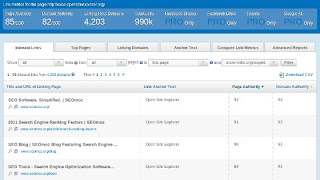I believe the best SEO methods are not merely recycled back-links from random low-quality websites. Great Methods needs to first target the potentials market & customers base. who view your products and services and convert them from "visitors to buyers".
Stage #1– Website Audit/Analysis & Competitiveness Analysis.
An Ideal SEO Audit Might Contain Following:
Stage #2 – ON-Page SEO.
While working in ON-Page SEO, Attention Should Be Paid To:
Stage #3 – Link Building: OFF-Page SEO.
Backlinks Can Be From:
Stage #4 – Social Media Marketing.
Nowadays social media is used by most of our consumer so we should focus on social presence more.
We’ll increase your business presence online through major social media. we have pretty good experience managing client’s business accounts over facebook, twitter, Google+, LinkedIn, MySpace, and YouTube.
Stage #4 – Measure Campaign Effectiveness
You can use Google Search Console, Google Analytics, and any other tools you to track your SEO campaign performance.
Here's a 5 Steps SEO Strategy for a successful Google optimization Campaign.
Stage #1– Website Audit/Analysis & Competitiveness Analysis.
An Ideal SEO Audit Might Contain Following:
- Technical and On-Page SEO Audit.
- Content Audit.
- Link Profile Audit.
- Social Engagement Audit.
- 2+ Competitors Website Audit.
- Industry Research/Analysis.
Stage #2 – ON-Page SEO.
While working in ON-Page SEO, Attention Should Be Paid To:
- Reduce sit loading speed for Desktop as well as Mobile Version.
- Keyword Analysis.
- Title & Meta Tags creation.
- Make sure every image has "ALT" Attributes.
- Content Optimization (Keyword Density, H1, H2, H3...).
- Internal Linking.
- Broken Link Fixing.
- Sitemap & RSS Feed creation.
- New Page Creation (If necessary).
- Website HTML & CSS Validation
- Google & Bing webmaster tools set up.
- Google Analytics Setup.
Stage #3 – Link Building: OFF-Page SEO.
Backlinks Can Be From:
- Search Engine Submissions.
- Directory Submission.
- Business Citation Links.
- High PR Profile Link Building.
- Social Bookmarking.
- Article Submission.
- PR Submission.
- Web 2.0 Blog / Mini website Creation.
- RSS Integration & Submission.
- Video-Sharing Links.
- Blog Commenting (Related).
- Forum Posting (Related).
- Guest Blogging.
- Infographic Sharing.
- Audio Sharing Links.
- Brand Identity Links.
- Image Sharing Links.
- Presentation Sharing Site.
- Artist Portfolio Links.
- Doc Sharing Sites.
- Website Valuation Sites.
- Website Feedback Sites.
- Participating Q&A site like Quora and Reddit.
Stage #4 – Social Media Marketing.
Nowadays social media is used by most of our consumer so we should focus on social presence more.
We’ll increase your business presence online through major social media. we have pretty good experience managing client’s business accounts over facebook, twitter, Google+, LinkedIn, MySpace, and YouTube.
Stage #4 – Measure Campaign Effectiveness
You can use Google Search Console, Google Analytics, and any other tools you to track your SEO campaign performance.































